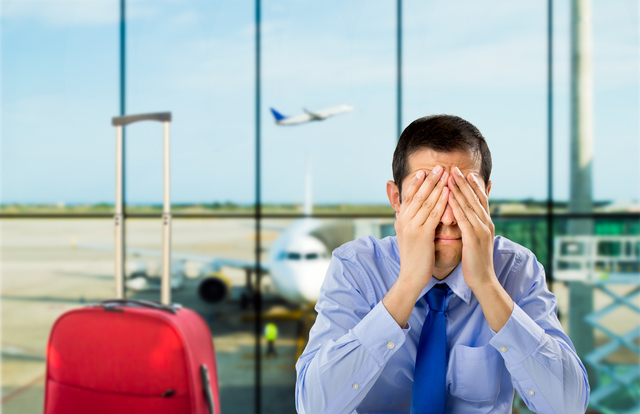Air travel does not have to be agonizing

It probably was inevitable that commercial airline cabins — once a setting for classy, even glamorous travel — would succumb to the modern-day scourge of pervasive bad manners.
Barely a week goes by without news of some traveler somewhere losing his or her cool and then inflicting their emotional meltdown on flight attendants or other passengers. Meanwhile, airline passengers who have become fed up with other passengers’ real or perceived breaches of etiquette have taken to sharing stories at such sites as Passenger Shaming (www.facebook.com/PassengerShaming).
But etiquette-based blowups at 30,000 feet can be prevented if travelers would prepare mentally and then model courtesy-rich behavior that might even spread to other passengers, making the flight a less stressful one for everybody.
Fact is, commercial air travel in recent years brought with it a few twists that can try travelers’ patience.
Air travel “used to be glamorous. People used to get dressed up to go flying,” says Daniel Post Senning, a spokesman for the Emily Post Institute, co-author of the 18th edition of “Emily Post’s Etiquette” and co-host of the podcast “Awesome Etiquette.”
Now, he says, “I think there are some things about air travel that are innately stressful.”
“You have a security environment, which means there are layers of lines, and that requires that we have patience,” he says. “And that’s everybody. Whether you’re flying first class or standby you have to take off your shoes and belt and put your hands in the air just to get to the gate.”
Then, Senning notes, “we also know that airlines have found routes to profitability that involve packing more and more people into smaller and smaller places and charging more fees for smaller and smaller conveniences.”
The stress of travel itself also can contribute to the heating of an otherwise placid air traveler’s temper.
“For a lot of people, flying is really scary,” Senning says, and “there’s a whole other set of anxiety that often comes with flying. You’re trying something new, you’re going somewhere different, or you’re going home to see the family.”
So combine the practicalities of 21st century commercial air travel with the emotional stresses that can be inherent in traveling, and flying today can be “as stressful as it’s ever been,” Senning says.
But that doesn’t mean harried travelers have to leave at home the usual consideration that they extend to others. “Mentally preparing yourself ahead of time is the best piece of advice I can give,” Senning says.
Understand, he says, that “you very rarely have the standing to address someone else’s bad etiquette. Etiquette is not useful as a tool we use to judge or assess other people, but it can be transformative if you can use it to assess and evaluate your own behavior.”
Focus not on the stresses you might experience, but on the benefits — seeing family, visiting with friends, taking a vacation to a spot you’ll love — you’ll receive from your travel. Then, arrive at the airport on time to minimize courtesy-killing hassles that might blunt your natural inclination toward courtesy.
“Be courteous of people around you,” Senning says. “It’s going to inspire the best response in those people. You’re more likely to encounter a smiling face if you personally exhibit good patience while offering to help when you can.”
On board the plane, beware of the most heated etiquette trap: the reclining seat back, which has been the focus of in-flight fights and even an invention that passengers can buy to wedge the seat in front of them from reclining.
Senning has heard the arguments for and against, and he comes down on not putting the seat back. That, he explains, is because not putting it back would be “a courtesy, because it’s absolutely your right. You paid for the seat. It’s got a button on it and you can put it back. The only person who can tell you to put it back in upright (position) is the flight attendant, and that person behind you doesn’t have the authority to make you do it.”
“I’m not going to argue that with you,” Senning says. “But what I am going to suggest is, it’s a courtesy.”
But it’s also about context. Senning says he has seen travelers put their reclined seats back to upright when meals are served. Conversely, reclined seat backs would seem to be more reasonable when cabin lights are dimmed on long flights, or on red-eye flights when passengers “are not going to open their eyes until, hopefully, the other side of the country.”
Another potential on-board etiquette conflict: Fighting for the armrest. Again, Senning says, compromise and understanding the other traveler’s position can go a long way toward preventing several hours of elbow pushing.
Divvying up the armrest may be an option, rather than occupying it unilaterally, Senning says, noting that compromise is “the heart of good etiquette.”
“The best advice I can give is prepare yourself mentally, put a smile on your face and prepare for the added stress and even challenges,” Senning says.
“You could say, ‘I’m going to be the agent of change. I’m going to be a positive factor in that situation.’ And it really is amazing how well the simplest courtesy — ‘Please,’ ‘thank you,’ ‘excuse me,’ ‘pardon me’ — works.”
Read more from John Przybys at reviewjournal.com. Contact him at jprzybys@reviewjournal.com and follow @JJPrzybys on Twitter.